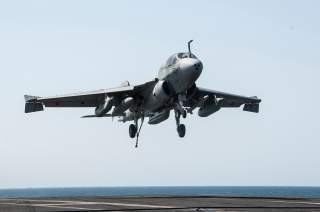China's Strategy in a War: Blind America, Then Go in for the Kill
Are we ready for that day?
Parting Thoughts:
Due to limitations of time and space, this is just one of many possible scenarios when it comes to Chinese calculations of war and peace and what types of strikes Chinese planners would consider if they decided to make the ultimate choice.
While the above description does sound bleak, there is cause for optimism for the U.S. First, one must consider that America is a global superpower with powerful forces spread out all over the planet and not just in Asia. Simply put, the U.S. could quickly begin to amass large amounts of forces around the world after China has used large amounts of ballistic and cruise missiles and begin the counterattack. And keep this mind: if China struck first don’t discount global public opinion and allied contributions to aid America’s counter blow.
Also, as Stillion explained, there are a few ways to blunt such Chinese tactics, but with a caveat:
“The key to operating effectively in the face of a credible precision-strike threat is to find a combination of hardening, dispersal, rapid repair capability, active defenses (like Patriot and THAAD) and distance from the threat that allows sustained, efficient operation of the “sortie factory.” Range is key, because the closer one is to the threat, the greater the weight of fire the adversary can deliver and the harder and more heavily defended the base must be. At some point, if an adversary is capable and competent enough, and the base is close enough, it may not be possible to operate efficiently no matter how hard and heavily defended the base may be.”
No one— including myself— wants to ever see a great power war between the United States and China. The ramifications are too horrific to imagine. Yet, the possibility is there for all of us to see. Walking through an exercise like the above— thinking through what such a calamity would be like — makes the risks all too clear. All the more reason for the Washington and Beijing to find any all mechanisms to lessen the pressure points between them.
This article first appeared in 2015. It is being republished due to reader interest.
Harry J. Kazianis serves as Senior Director of Korean Studies at the Center for the National Interest and as Executive Editor of The National Interest.
Image: Mass Communication Specialist 3rd Class Brian Stephens/U.S. Navy via Reuters.

